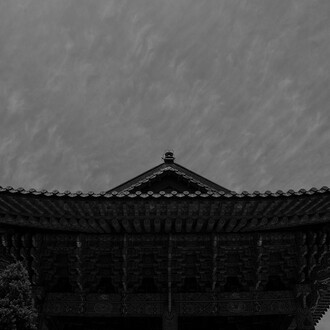Kate Oh Gallery’s cancer fundraiser show, programmed on behalf of Richard Volpe and featuring work by Alyssa Giammona, uniquely features geometric artworks that are imbricated in a number of art historical modalities that make this small exhibition rather unique. Giammona’s Left Triptych, Middle Triptych, and Right Triptych feature a prismatic, serpentine zipper-like pattern composed of coral pink, lavender-lilac purple, flaxen yellow, and crystalline beryl. These lines bleed into one another, unspooling an academic demonstration in color theory and geometric play. Simultaneously, the works are reminiscent of the great Italian avant-garde artist Carla Prina and other members of the twentieth century “Group of Abstractionists of Como”. These artists who layered geometric fields and objects—often including lines and ovular, egg-like forms—to create formal assemblages where colors seeped into one another, bereft of the kind of sharp edges that would serve as borders for Cubist and post-Cubist artists like Picasso and John D. Graham.
Giammona’s work is in some sense quite minimal and thus quietest: the cultivated, zags belong to the still, static, and foreign world of perfected shapes, one resolutely distinct from our world of jagged, uneven edges and stumbling mistakes. Giammona’s world is also distinct from the Cubist sensibility, as there is no tethering to representational indices: no faces, legs, or geographical landmarks. Consequently, Giammona’s Triptych series speaks to a both a scholarly exercise in color theory, optics, and architecture blueprints and also an celestial, intangible world of forms. Notably, the exhibition also features a contribution of an entirely distinct order, made by Richard Volpe. Amongst these works, which are graffiti, is one that reads “Power” and another that reads “Free Spirit”. The latter includes a three-dimensional triangular shape floating in the clouds; other are more abstract expressionist-like, with streaks and blots dripping down the canvas. On the one hand, Volpe’s use of “Power” and “Free Spirit” clearly speak to the power that one battling cancer invariably wields, taking atrocity and mortality head-on. The letters’ blushpink tone is fleshy and human, while the blue outline drips outwards into a deep, ocean-like background. Placed in a lineage of art history that includes bastions like Stan 153, Kool Koor, Copez, and Richard Hambleton, Volpe speaks to the dovetailing of high-art and street art. The third artist of this group show is Eliza Bender, whose black-and-white works resemble melted, oozing iron and ore. Anthropomorphic figures can be made out, such as a large-eyed, smiling canine or a woman with beads of dripping, thick silver strands of hair. Bender’s work is rather impressive, using figures that appear digitally rendered and placing them into a cascade of pooling metal.
Despite Giammona’s Triptych34wazhny6 series seems entirely distinct from the graffiti work, which is in turn distinct from Bender’s, upon closer examination one notices a number of formal connections. Indeed, a similar color palette between the Triptych series and Volpe’s graffiti pieces; furthermore, similar silhouettes occupy Bender and Volpe’s pieces. These are, on the one hand, distinct worlds: with Giammona, we have the realm of the ethereal, which is preoccupied with formal exercises in visual fields and optics. With Volpe, we have the concrete world of sprawling, chipped cityscapes littered in dust and spray-painted with tags and so-called “throw ups” (works of graffiti that often feature bubble-like lettering). With Bender, we have foreign substances lapping into one another and, in doing so, proffering slight resemblances to faces and animals. Stitched together, these worlds collectively communicate a kind of hopefulness and bright energy, speaking to the optimistic ethos of Kate Oh’s exhibition and the fundraiser at large.
(Written by Philosopher Researcher, Ekin Erkan)
















